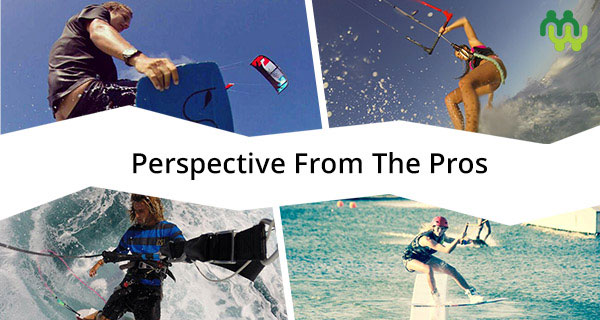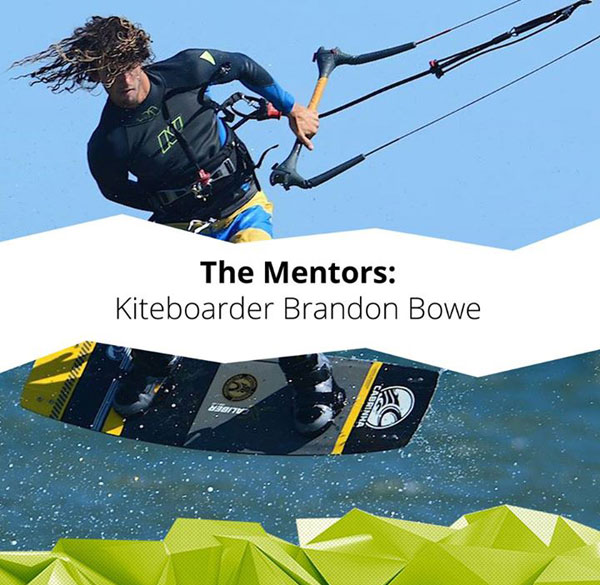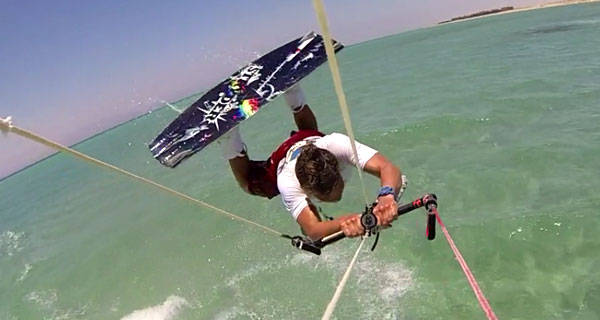Kitesurfing has been globally recognized as one of the fastest growing sports. There’s been an incredible surge in interest to learn kitesurfing, however the professional kitesurf community seems to be taking a little longer to catch on with big brands, attract public attention and continually engage new learners. This is in part because, like any young sport, many people who try to get involved, run into a number of barriers, potentially causing their interest to be redirected towards an easier alternative with a more established community.

To continue the growth of kitesurfing as a sport, we need to recognize and overcome the barriers to entry these newcomers are faced with, and amplify the existing kiting community’s voice at the same time. We asked a number of pros who didn’t let anything get in their way what barriers you might run into when learning to kitesurf professionally, how to overcome them and why it is all worth it in the end.
Helena Brochoka
“At a beginner level, I think a lot of it comes down to fear. People are scared of a big powerful kite that can pull them out of control. Understanding the wind and kite’s “power zone” is really important in order to feel comfortable with a kite. It may seem hard at first, but it just needs a bit of practice. In the end, it’s a relatively safe sport, as long as you don’t engage in risky actions (such as launching close to trees, buildings, or rocks etc). I think it is most important to be familiar with how the wind works, and how to control a trainer kite fully before you switch to the actual big kite.
At a more advanced level, kitesurfing is very dependent on the conditions. In many other sports once you learn a trick, you usually know how you do it, and you will probably land it nearly every time. In kitesurfing you often think you’ve nailed it, but it might not work the next day or at a different spot due to varying wind and water conditions. Learning a trick is a much longer process, and it takes years to gain consistency. As frustrating as this might be, the key to success is to not give up, and just to keep trying again and again.”
Alex Arseneault
“I would say that the biggest barrier when learning to kitesurf is probably our ability to make decisions. When starting the sport, we are not always aware of the danger or risks of a spot or wind conditions.
To overcome that barrier, surround yourself with experienced people. Don’t be afraid to ask questions at a kite spot. Many kiters are present anywhere there’s wind and water. Take your place in a community; even if you are a beginner, we’ve all been there before!”

“Kite schools and shops are also there for you. Find the best Kite School you can trust and continue to ask questions. Kiteboarding can be complex (kites, boards, bars, lines etc). We learn every day, that’s what makes this sport so special.”
Jessica Perigny
“I would say that for someone who has never participated in any wind sports, understanding how the wind works is really difficult. I remember when I was teaching at Real Watersports, I would spend so much time explaining the wind. The best way to overcome this, in my opinion, is to watch videos and spend LOTS of time flying a trainer kite. It’s so much easier for a coach when students arrive having watched videos because they at least have a basic idea of what to expect.”
Dom Granger and Annie Carrier
“I would say, and I think it’s different for men, but for women, aside from money and/or time, I would say fear is the biggest barrier. Fear of not to being able, fear of the water, fear of not being strong enough, and fear of not being able to afford it. The best way to overcome this fear? Just do it! It’s definitely possible if you want it to be.”
Jana Schader
“The biggest barrier in learning how to kiteboard for me was getting back on the board after your first huge crash. To overcome your fear, you have to start slowly and think back to something great that happened before the crash. Watching others crash and get back up helps too.”
Brandon Bowe and Brandon Cordina

“Time and dedication. Kiteboarding takes anywhere from 5-8 hours to learn the basics, and the first stages of learning to kitesurf are very difficult. Just stick with it and learn to stay up wind, which is the key to success. Oh and make sure to get proper instruction! It’ll save you a lot of frustration!”
Jake Kelsick
“Mastering the kite. I always tell people kiteboarding is 80% kite control and 20% being on the board. Once you master the kite, your kite life will be much easier. Aside from that, if you are persistent and motivated, you will be ripping it up in no time!”
These kitesurfers and so many others are passionate about working with new and experienced kiters to help keep this sport growing to the level that it deserves. You can check out our kiting community, what they can do and what they can teach you on MentorMob by clicking to their profiles above.
What barriers and challenges have you faced to get to the level you are at now, and how did you overcome them? What tips can you offer potential newcomers to our sport to keep them motivated? We’d love to hear from you in the comments below.
This article was contributed by MentorMob, a community for kiteboarders and various other interest groups, and a great place to get free online learning guides.










